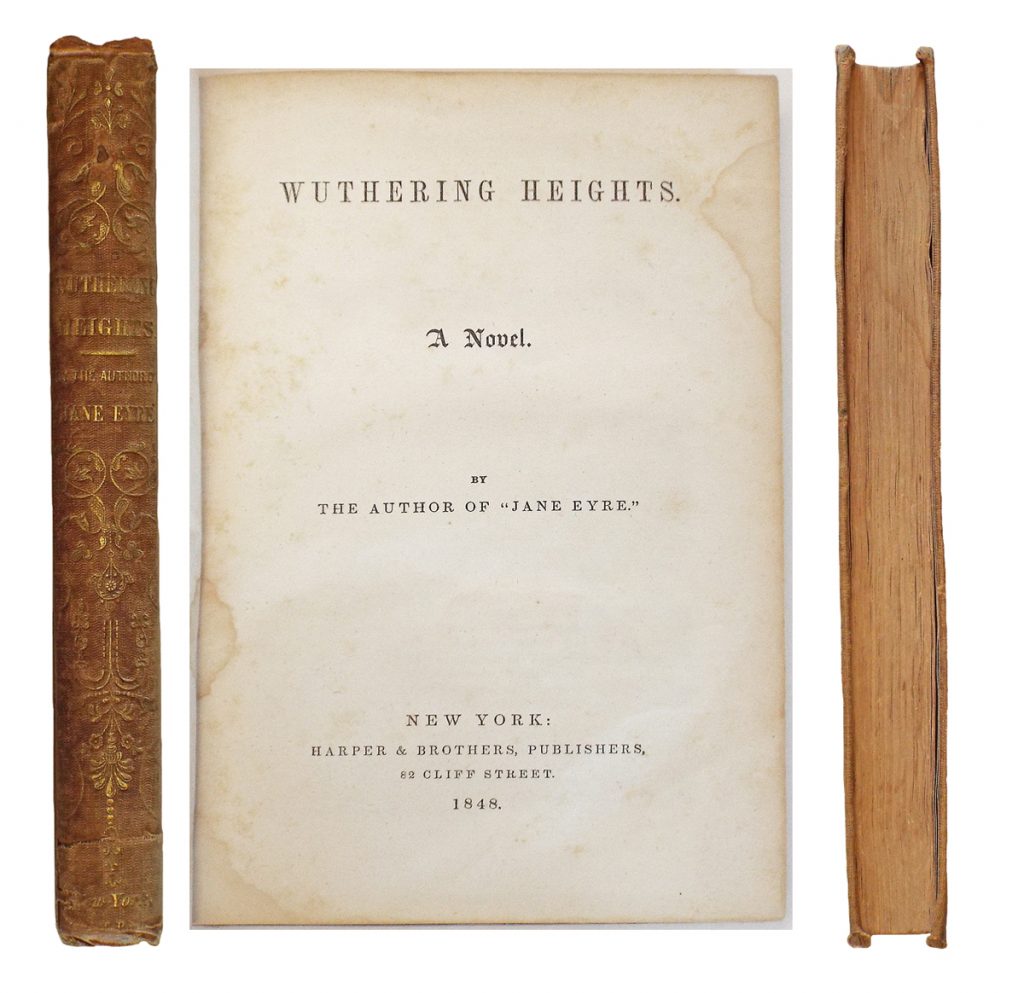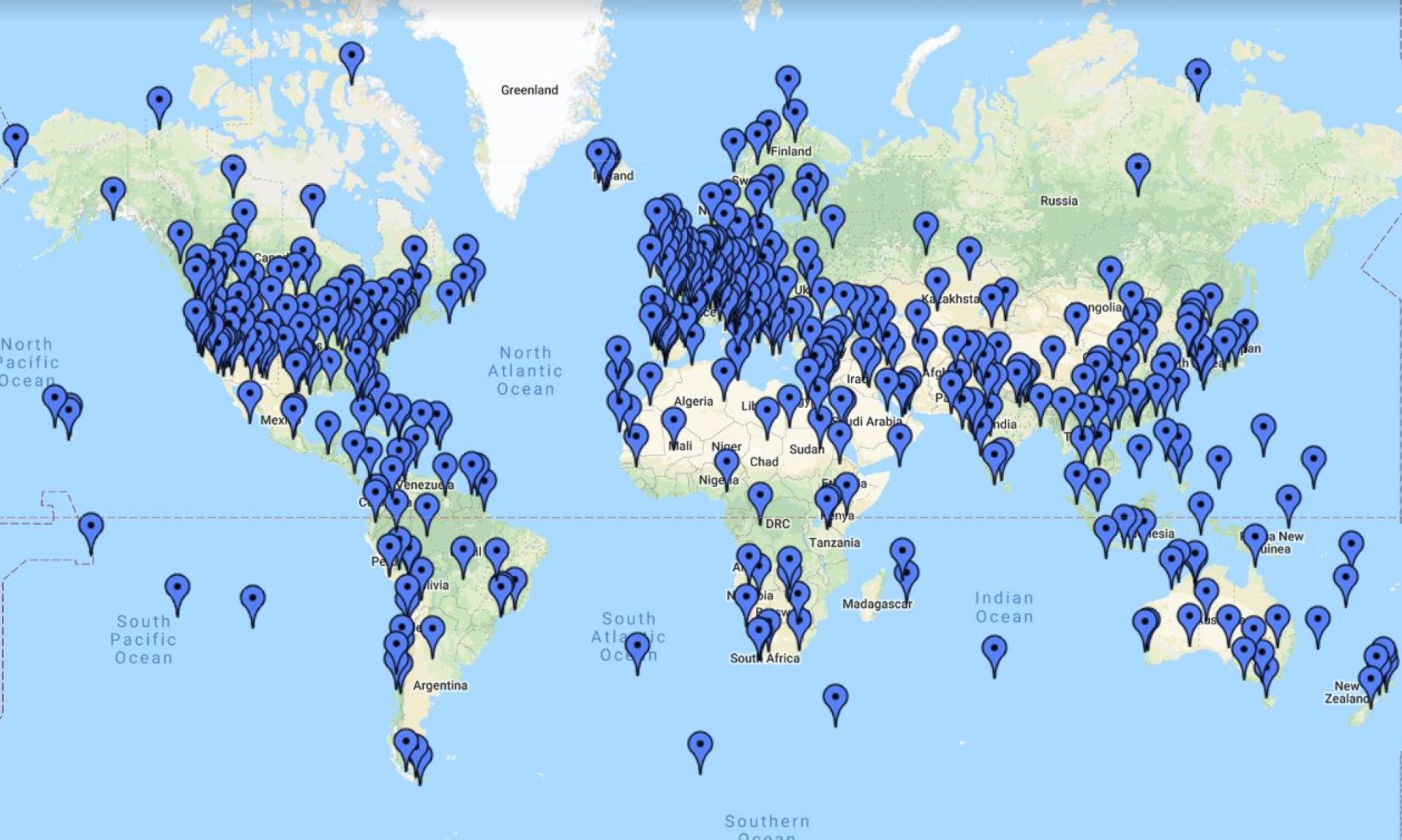
Ok, before I start, I have to point this out. For this series, I’ve been trying to include a picture of first editions of the books being featured. When I looked this one up, I was somewhat taken back. I checked a couple of different sources and found the same image over and over again. Now, we all know that “Wuthering Heights” was written by Emily Brontë. “Jane Eyre” was written by Emily’s sister Charlotte Brontë. Could the publishers at Harper not tell the sisters apart? Did they figure that not two people could possibly have a last name with an e-umlaut from England? I have not found an explanation for this, but if someone knows, I’d love to hear what happened here.
Top Withins is an abandoned estate, a ruined farmhouse on a windy West Yorkshire plane. While there is no direct proof that this was the inspiration for the farmhouse, and it really doesn’t fit the description of the Wuthering Heights, it seems to be accepted as axiomatic from Brontë historians and fans that this is what Emily was thinking of while she wrote the novel. I guess if you put a plaque on something, it makes it true?!?!?
Those who found this before the hint were:
- Garfield
- hhgygy
- Walter_V_R
- Phil Ower
- Paul Voestermans
- Martin de Bock
- Philip Giles
- Gillian B
- krenek
- Kiribatian Jacob
- Eloy Cano
- Lighthouse
- Graham Hedley
- Борис Карлофф
- MC Solaar
And after the hint:
- Robin
- Chris Nason
- Jeather

Easy to find with google, here is an extract from the editor’s notes to one of the editions of Wuthering Height. I think it sheds some light on the issue (pun intended):
A Note on the Text
An editor of Wuthering Heights must contend with the following obstacles: 1) No manuscript of the novel, nor any corrected page proofs, survives. 2) The first edition, the only one published during the author’s life, is notoriously error-prone and inconsis¬tent in its punctuation. Most distractingly, it is peppered—albeit inconsistently—with commas far beyond what was typical of nineteenth-century practice, which already differed from ours in using diem more liberally. 3) The second edition, published after Emily Bronte’s death by her sister Charlotte, corrects the obvious errors of the first, purges some of the excessive commas, and achieves greater consistency; but it also changes the text in subtle ways that affect the overall experience. The short paragraphs of the first edition, which probably represent Emily Bronte’s inten¬tions, were combined into longer ones to save space; and Joseph’s speeches were re-written to make them more comprehensible to the non-Yorkshire reader, with the result that they look (at least to my eye) regrettably charming and “quaint.”
The circumstances under which Wuthering Heights appeared before the reading public probably account for the problems with the first edition. Thomas Cautlcy Newby, the publisher, agreed at some point in the summer of 1847 to publish Wuthering Heights together with Acton Bell’s (Anne Bronte’s) Agnes Grey in the preferred three-volume format, but did not immediately set to work. In the meantime, “Currcr Bell’s” Jane Eyre was accepted for pub¬lication by Smith, Elder, and very prompdy prepared, printed, and distributed. Its immediate popular success propelled Newby into action, and Withering Heights and Agnes Grey appeared two months later, in December. In his desire to exploit the Bell name, he placed advertisements implying that Wuthering Heights and Agnes Grey were other works by the author of Jane Eyre, and falsely attributing Wuthering Heights to Acton rather than Ellis Bell. (See facing page.) The misattribution was likely a result of carelessness, since Acton Bell was as much an unknown quantity as Ellis; but conceivably, he may have meant to sow confusion about whether there were three Bells, two, or just one. He seems to have deliberately misled the publisher to whom he sold the American rights of Wuthering Heights about its authorship, for the title page of the first American edition bears the name of the newly popular Currer Bell. (Some American reviewers were aware of the discrepancy between the American and British edi tions, but others were not.) It is difficult not to conclude that Newby had rushed to print IWithering Heights and Agnes Grey (which filled out the third volume of the preferred “three-decker” format) without regard to correctness, while “Jane Eyre fever” (as one reviewer called it) was still running high. As a further insult, Newby never paid Ellis and Acton Bell their share of the profits from the sale of the complete print run (350 volumes) of the first edition. (He treated Anne Bronte more generously when he brought out The Tenant of Wildfell Hall, and a letter from him, addressed to “Mr. Bell,” suggests that iimily Bronte may have expressed interest in publishing with him again.)
‘Hie first edition, which is the copytext for the current edition, presumably approximates more closely than the second to Emily Bronte’s intentions. Confronted by its sloppincss, however, an editor of Wuthenng Heights is required to do considerable textual housekeeping. The question then arises: should one follow Zillah’s usual policy of keeping aloof in the midst of chaos, or Nelly’s strategy of active intervention? Can one even draw the line between them? In the representation of speech—which com¬prises almost every- sentence of Wuthenng Heights—it is often dif¬ficult to judge when punctuation conveys something about the rhythms of speech as the author imagined them, and when it is merely a matter of accidentals. Tins problem is compounded by the fact that we don’t know which of the “accidentals” represent Bronte’s intentions because there arc so many inconsistencies in their handling. Like the housekeepers in Wuthering Heights, one is forced to intervene on a regular basis. At what point docs neces¬sary intervention melt into meddling?